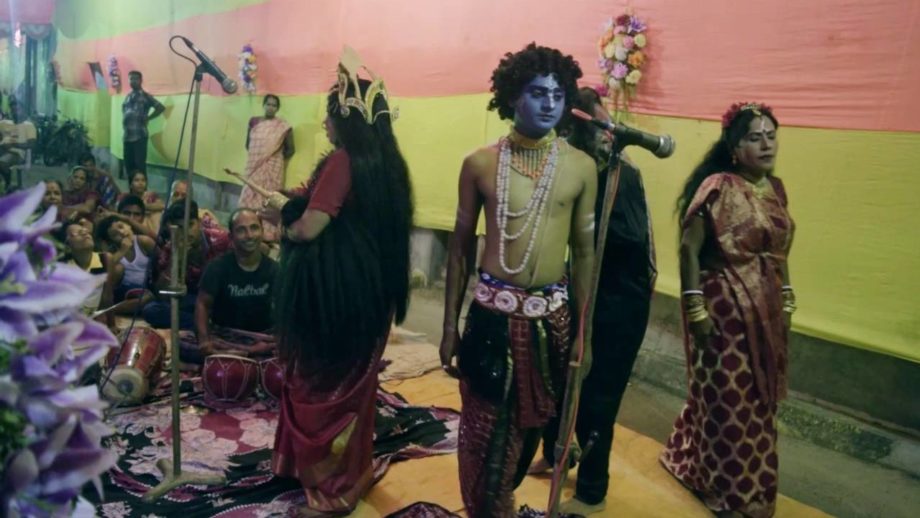It started as a result of the Bhakti movement in which the devotees of Krishna used to sing and dance in the processions. This was also sometimes associated with acting trances. Chaitanya and his associates were the first to employ this performing art (music, dance, and play-acting) form to promote their faith among masses.
During 19 century, it became secularised when it was staged with love stories and other social and political themes. With the beginning of the 20th century, dialogues were also inculcated in plays but were primarily sung. The duration of the theatre which was earlier for all night was cut short to four hours.
Currently, Jatra performances consist of action-packed dialogues coupled with about 6 songs which are sung in chorus. The ‘Vivek’ or the conscience represents the singing chorus of the play who can appear any moment in the play and comments on actions of character, philosophies and warns for upcoming dangers in the particular theatre performance. He can play the double of every role and his songs externalize the inner feeling of the characters.
Jatra has become highly organized and commercially-run troupes now. Its actors are more professional actors found in the theatrical centers of Kolkata. Currently, Jatra is a 21m dollar worth-a-year industry. Plays are performed on nearly 4,000 stages in West Bengal alone. In1961, the first Jatra festival was organized in Kolkata and since then it has been continued as a legacy.
In 1968, Phanibhusan Bidyabinod became the first Jatra artist to receive the Sangeet Natak Akademi Award. Many of Jatras today choose contemporary news events like the London bombings, 9/11 or the war in Iraq, and highlight local issues in their plays.


